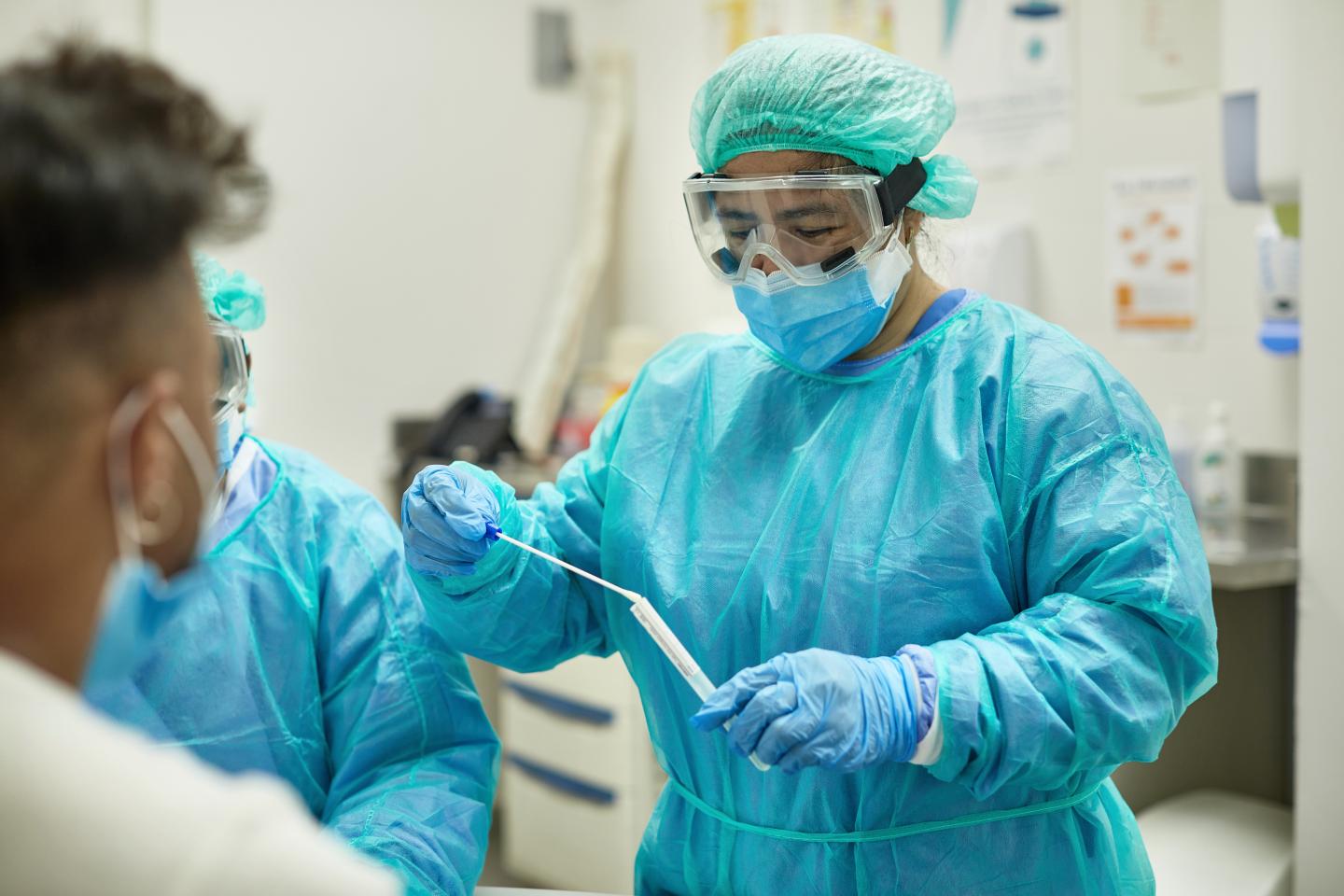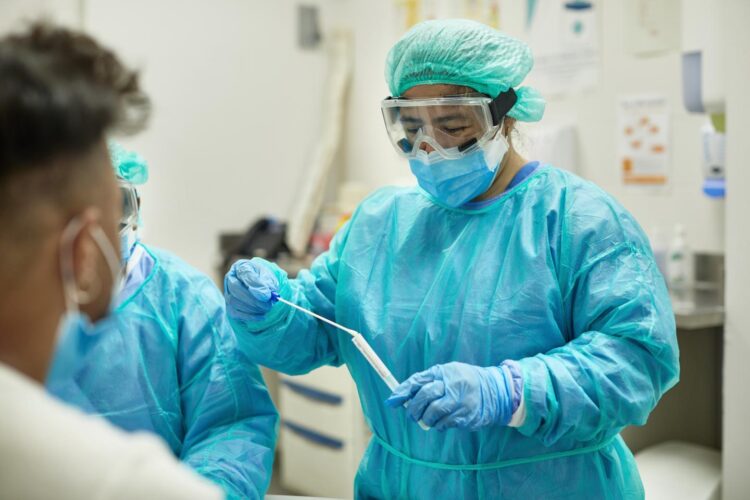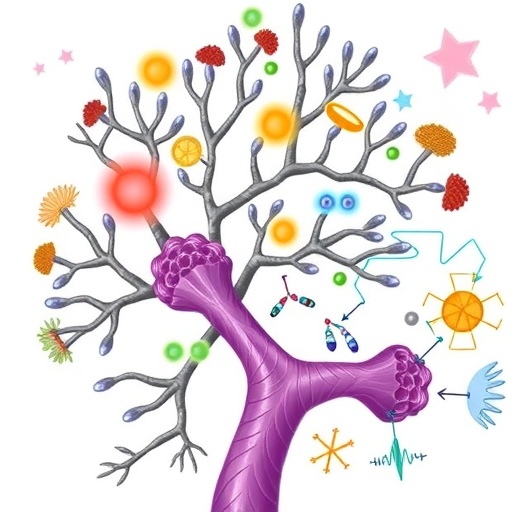
Credit: American Thoracic Society
Oct. 29, 2020– A new study published online in the Annals of the American Thoracic Society examines whether the amount of RNA, or genomic load, of SARS-CoV-2 detected in swab tests of patients being admitted to the hospital with viral pneumonia is associated with more severe COVID-19. SARS-CoV-2 is the virus that causes COVID-19. Previous studies on this question have had conflicting results.
In “Association of SARS-CoV-2 Genomic Load With COVID-19 Patient Outcomes,” Ioannis M. Zacharioudakis, MD, infectious disease specialist in the Department of Medicine at the New York University Grossman School of Medicine, and co-authors looked at the medical records of 314 patients who came to the NYU Langone Health emergency room between March 31 and April 10, 2020, diagnosed with COVID-19 on a molecular diagnostic (RT-PCR) test who also had viral pneumonia serious enough to require hospitalization. This research was conducted as a retrospective cohort study–one that follows former patients who had common characteristics.
“We demonstrated that for patients admitted to the hospital with COVID-19 pneumonia, SARS-CoV-2 load, as reflected by the cycle threshold (Ct) value of the PCR, should be looked at as a predictor of adverse outcomes,” said Dr. Zacharioudakis. “High viral load was shown to be a predictor of poor outcomes above and beyond age, other medical problems and severity of illness on presentation, indicating that it can be used to risk-stratify, or triage, patients.”
Real-time reverse transcriptase-polymerase chain reaction (RT-PCR) tests for SARS-CoV-2 are the most accurate class of COVID tests available today, and they can sample and analyze the greatest amount of genetic material, even at presymptomatic stages of the disease. In this study, respiratory samples that were analyzed by RT-PCR technology were gathered from patients using nasopharyngeal swabs, the long swabs that are widely used in health care settings as well as at public testing sites.
A cycle threshold value is one of the results that the PCR technique gives and can be used as a surrogate of the amount of virus that is detected on nasopharyngeal swabs. Since Ct value is obtained on most commercial RT-PCR testing platforms, it can prove a readily available tool to the provider to help risk-stratify and triage patients admitted to the hospital with COVID-19 pneumonia.
The researchers determined that study endpoints would include whether a patient required mechanical ventilation or extracorporeal membrane oxygenation (ECMO), and whether the patient died while in the hospital or was discharged to hospice. Statistical calculations were done to determine how frequently the endpoints were reached by patients who had high versus low viral load after adjusting for the patients’ co-occurring conditions (comorbidities) using the Charlson Comorbidity Index and how severe the pneumonia was at the time of presentation, as shown in the Pneumonia Severity Index.
“We know that the virus multiplies rapidly in the asymptomatic and early symptomatic phases of COVID-19,” Dr. Zacharioudakis stated. “Our study is in keeping with this conclusion, as indicated by our finding of higher viral load in patients who presented earlier in the disease.”
He added: “The study also found that patients who had multiple comorbid conditions, such as heart disease, diabetes and cancer–or who were immunocompromised due to solid organ transplant–were more likely to have a higher SARS-CoV-2 load at hospital admission and as a result an increased risk for poor outcomes.”
An important characteristic of this study was that it focused on patients who required admission to the hospital for COVID-19 pneumonia, a group who are at high risk for serious illness or death. The fact that the association of the high viral load with poor patient outcomes remained after taking into account the patients’ underlying conditions, how long they were sick before coming to the hospital and how sick they were at the time they presented adds valuable evidence that demonstrates the ability of SARS-CoV-2 viral load to predict COVID outcomes.
The authors note that, among patients with a severe clinical presentation, those with a high SARS-CoV-2 viral load were almost twice as likely to get intubated or die.
Dr. Zacharioudakis added, “Our study provides a justification for using patients’ SARS-CoV-2 load at the time of hospital admission to assess their risk of adverse outcomes. In an era when the availability of antiviral medications proven effective against COVID might be limited and the capacity for intensive monitoring is finite, it is of utmost importance to be able to prioritize the patients who will benefit the most from early treatment or a higher level of care. Further studies are needed to evaluate whether a decrease in viral load of patients hospitalized with COVID-19, who may or may not be treated with antiviral medications such as Remdesivir, correlate with an improvement in clinical status.”
###
Media Contact
Dacia Morris
[email protected]





